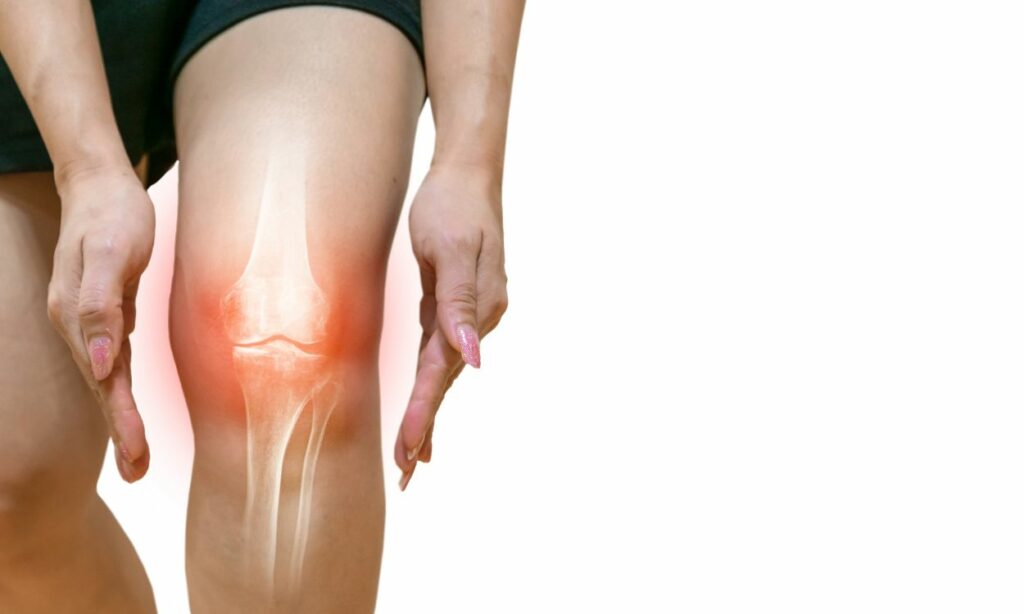Every step you take can be a painful reminder of the intricate mechanics of your knee—the very mechanics that once functioned seamlessly. Cartilage damage in the knee is more than just a diagnosis; it’s a daily challenge that alters the way you move, lives, and experience the world around you. The pain, the stiffness, the uncertainty—these are the unwelcome companions of cartilage damage. But this guide is crafted with you in mind, offering insights, solutions, and a roadmap to regain control over your knee health. Let’s embark on this journey together, unraveling the complexities of cartilage damage and discovering ways to heal, move, and thrive once again.
Contents
Understanding Knee Cartilage Damage
 Within the confines of the knee, cartilage stands as the silent protector—ensuring smooth motion and absorbing shocks from our everyday activities. But when it’s compromised, the domino effect on our movement and comfort can be significant.
Within the confines of the knee, cartilage stands as the silent protector—ensuring smooth motion and absorbing shocks from our everyday activities. But when it’s compromised, the domino effect on our movement and comfort can be significant.
Factors Contributing to Cartilage Damage:
Cartilage damage can occur due to a myriad of reasons, and understanding these can be pivotal in prevention:
- Traumatic Events: Accidents, sports injuries, or any direct blow can result in sudden damage to the cartilage, especially the meniscus.
- Wear and Tear: Just like any material, over time and constant use, cartilage can wear down. This is especially true for individuals who engage in high-impact activities or sports.
- Poor Biomechanics: Incorrect posture or alignment during activities can exert undue pressure on certain parts of the knee, leading to faster degradation of the cartilage.
- Age: As we age, our cartilage naturally becomes more brittle and susceptible to tears and damage.
Symptoms and Impact on Daily Life: Cartilage damage can manifest in several ways:
- Pain, especially when twisting or rotating the knee.
- Swelling or stiffness.
- A feeling of the knee “giving way” or being unstable.
- Limited range of motion.
- A sensation of clicking or catching in the knee joint.
Being equipped with this knowledge, we can now delve into the various treatments and solutions to tackle cartilage damage head-on.
Strengthening Exercises for Damaged Knee Cartilage
Regular exercises can play a pivotal role in rehabilitating damaged knee cartilage. These exercises not only help in reducing pain but also in strengthening the surrounding muscles, thereby offering better support to the knee joint. Here are some beneficial exercises to consider:
Quadriceps Contractions
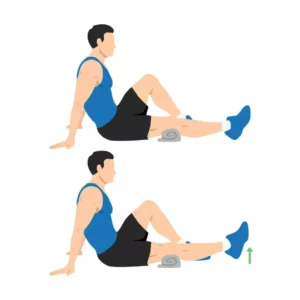
- Sit with your legs extended in front of you.
- Tighten the quadriceps (muscles at the front of the thigh) without bending the knee.
- Hold for 5-10 seconds and then release.
- Repeat 10-15 times for 2-3 sets.
Hamstring Curls
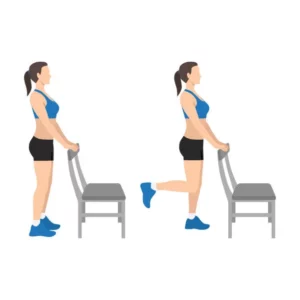
- Stand behind a chair, holding it for support.
- Slowly bend one knee, bringing your heel towards your buttocks.
- Hold for a few seconds, then lower.
- Perform 10-15 repetitions on each leg for 2-3 sets.
Calf Raises

- Stand upright with your feet shoulder-width apart.
- Slowly lift both heels off the ground, standing on your toes.
- Hold the position for a few seconds and then lower.
- Repeat 10-15 times for 2-3 sets.
Straight Leg Raises
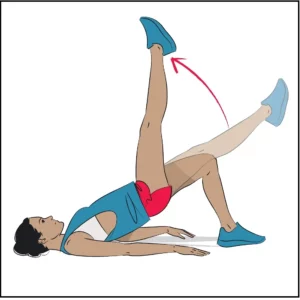
- Lie flat on your back with one leg bent at the knee and the other leg straight.
- Lift the straight leg up to the height of the bent knee.
- Hold for a few seconds and then lower.
- Perform 10-15 repetitions on each leg for 2-3 sets.
Knee Extensions
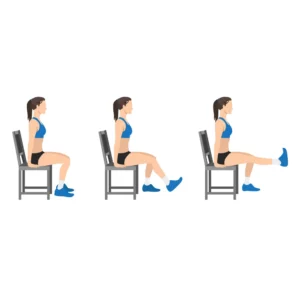
- Sit on a chair with your feet flat on the ground.
- Slowly extend one leg out in front of you.
- Hold for a few seconds, then lower.
- Repeat 10-15 times on each leg for 2-3 sets.
Remember, consistency is vital. It’s also essential to start slowly, especially if you’re new to these exercises. As always, consult with a physical therapist or healthcare provider before starting any new exercise regimen, especially if you have existing medical conditions.
Non-Surgical Approaches for Relief
While the very thought of cartilage damage can be daunting, the silver lining is that many non-surgical treatments have shown promise in alleviating pain and enhancing the knee’s functionality. These methods aim to restore mobility, reduce inflammation, and facilitate the healing process, making them ideal initial approaches before considering surgical options.
Physical Therapy
 Physical therapy plays a pivotal role in knee cartilage rehabilitation. Tailored exercises and stretches can:
Physical therapy plays a pivotal role in knee cartilage rehabilitation. Tailored exercises and stretches can:
- Improve muscle strength surrounding the knee.
- Enhance joint flexibility.
- Promote optimal knee alignment, reducing undue stress on the cartilage.
Bracing and Orthotics
Customized knee braces or shoe inserts can be beneficial by:
- Providing added support to the affected knee.
- Redistributing weight and reducing pressure on damaged areas.
- Improving overall joint alignment and movement dynamics.
Medications

Over-the-counter pain relievers, such as NSAIDs (Non-Steroidal Anti-Inflammatory Drugs) like ibuprofen, can:
- Reduce inflammation around the knee.
- Alleviate pain and discomfort.
In certain cases, doctors might also recommend corticosteroid injections directly into the knee joint to provide more immediate relief from inflammation.
Weight Management
Maintaining a healthy weight or shedding excess pounds can:
- Significantly reduce strain on the knee joint.
- Slow the progression of cartilage wear and tear.
Alternative Therapies
Some individuals find relief through alternative treatments like:
- Acupuncture, which may help reduce knee pain by targeting specific points.
- Supplements such as glucosamine and chondroitin that are believed to support cartilage health, though scientific evidence is mixed.
It’s crucial to understand that while non-surgical approaches can be highly effective, they work best when tailored to an individual’s specific condition and needs.
Innovative Methods for Knee Cartilage Repair and Restoration
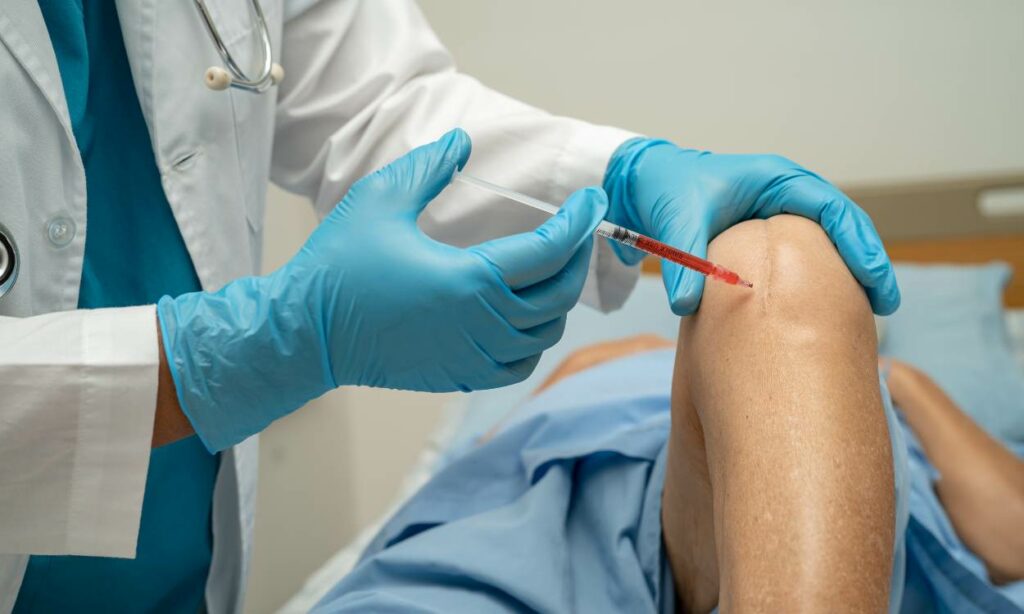
In the realm of orthopedic medicine, cartilage repair and regeneration remain frontiers that researchers and clinicians continuously aim to advance. Given the knee cartilage’s limited ability to heal itself, pioneering methods have emerged to stimulate repair and mitigate further degeneration. Let’s delve into some of the groundbreaking techniques that are rewriting the narrative of cartilage restoration.
Stem Cell Therapy
Stem cells, with their inherent ability to differentiate into a plethora of cell types, hold immense promise for cartilage repair.
- Process: Stem cells, typically harvested from the patient’s own bone marrow or adipose tissue, are injected into the knee joint.
- Benefit: They potentially differentiate into chondrocytes, the cells responsible for cartilage production, encouraging natural regeneration.
Growth Factors
Harnessing the power of specific proteins, growth factors aim to stimulate tissue repair and regeneration.
- Process: These proteins are introduced to the damaged area, generally through injections, to encourage cell proliferation and matrix synthesis.
- Benefit: They potentially accelerate the healing process and improve the quality of the regenerated tissue.
Platelet-Rich Plasma (PRP) Therapy
PRP is a concentrate of platelet-rich plasma protein derived from whole blood, minus red blood cells.
- Process: After processing the patient’s own blood, the PRP, rich in growth factors, is injected into the affected knee area.
- Benefit: It potentially stimulates healing and reduces inflammation, aiding cartilage repair.
3D-Printed Implants
The amalgamation of biotechnology and engineering has given birth to 3D-printed implants tailored for cartilage repair.
- Process: Using patient-specific MRI or CT scans, implants are 3D-printed to match the precise dimensions of the cartilage defect.
- Benefit: These biocompatible implants can integrate seamlessly with surrounding tissues, providing a scaffold for natural cartilage to grow upon.
Matrix-Induced Autologous Chondrocyte Implantation (MACI)
MACI represents a newer generation of a procedure where a patient’s own cartilage cells are used to grow new tissue.
- Process: Chondrocytes are harvested, expanded in a lab, and then seeded onto a collagen membrane. This matrix is then implanted into the cartilage defect.
- Benefit: It encourages the growth of new cartilage in the exact location of the damage.
It’s exhilarating to witness these leaps in orthopedic medicine. However, while these innovative techniques offer hope, it’s vital to consult with orthopedic specialists to evaluate the best-suited approach for an individual’s unique condition.
Proactive Steps and Lifestyle Adjustments to Prevent Future Knee Cartilage Damage
 The age-old adage, “Prevention is better than cure,” rings particularly true for joint health. As cartilage damage in the knee can drastically impact one’s quality of life, taking preventive measures is paramount. Here are proactive steps and lifestyle modifications that can help safeguard your knee cartilage, ensuring a more active and pain-free life:
The age-old adage, “Prevention is better than cure,” rings particularly true for joint health. As cartilage damage in the knee can drastically impact one’s quality of life, taking preventive measures is paramount. Here are proactive steps and lifestyle modifications that can help safeguard your knee cartilage, ensuring a more active and pain-free life:
1. Maintain a Healthy Weight: A balanced diet coupled with regular exercise can aid in weight management, thereby reducing stress on the knees.
2. Choose Joint-Friendly Exercises: Opt for low-impact exercises like swimming, cycling, or elliptical training. They provide a good workout without jarring the joints.
3. Incorporate Strength Training: Regularly engage in exercises targeting the quadriceps, hamstrings, and calf muscles.
4. Prioritize Flexibility: Incorporate stretching routines and consider activities like yoga or Pilates to boost overall flexibility.
5. Use Supportive Footwear: Invest in shoes that provide good arch support and cushioning. If necessary, consider orthotics tailored to your foot structure.
6. Listen to Your Body: If you experience discomfort or pain after an activity, consider taking a break, icing the area, and seeking professional advice if it persists.
7. Regular Check-ups: Periodic assessments by an orthopedic specialist can help monitor joint health and offer guidance on preventive care.
While genetics and unforeseen accidents can play a role in knee health, these preventive measures can significantly diminish the risk of cartilage damage.
Conclusion
Knee cartilage damage, while common, doesn’t have to dictate the quality of your life. With the right combination of preventive measures, innovative treatments, and lifestyle modifications, there’s a path to relief and recovery. Most importantly, early intervention is key. If you’re experiencing discomfort or just have concerns about your knee health, don’t wait. At PhysioMantra, our experts are equipped to guide you towards optimal knee health.
If you’re experiencing Knee pain, physical therapy for knee pain at PhysioMantra can help: Book an online physical therapy session.

